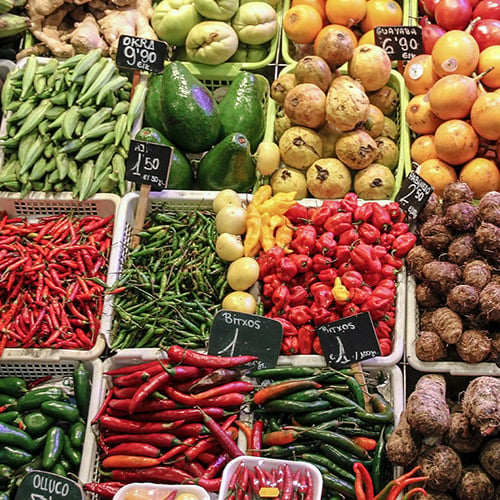Should You Choose Locally Sourced Food for Your Restaurant?
Locally sourced food can be beneficial for both eco- and health-conscious restaurants. It can help improve your restaurant’s reputation, support local agriculture, and provide guests with wholesome, healthy ingredients. If you’re wondering what locally sourced means and what to consider before making the decision to serve locally sourced food, read below to learn more.
What Does Locally Sourced Mean?

By definition, locally sourced food generally refers to products served and consumed within a 100 to 150 mile radius of where they’re grown.
While these numbers are a generalization, there is no concrete rule when it comes to what constitutes as local food. According to the U.S. Senate Committee on Agriculture, Nutrition, & Forestry’s Consolidated Farm and Rural Development Act, “the term ‘locally or regionally produced agricultural food product’ means [food] raised, produced, and distributed in the locality or region in which the final product is marketed, so that the total distance that the product is transported is less than 400 miles from the origin of the product.”
When Did the Locally Sourced Food Movement Begin?
Today’s push for locally sourced foods actually began in 1981 with a set of guidelines produced by the Society of Nutrition Education. These guidelines were created to promote local food production in order to slow down the loss of farmland. These statutes also prescribed sustainable diets, something that was a new idea for the American public.
Benefits of Locally Sourced Food

There are many benefits to incorporating locally produced food into your restaurant. So many locally sourced foods are nutritious and promote good health, which appeals to health-conscious customers.
Here are a few more benefits of locally sourced foods:
- Keeps money local and boosts nearby economies
- Fresh produce offers variety depending on what’s in-season
- Encourages crop rotation which keeps soil in good condition for future farming
- Contributes to a sustainable agricultural economy and work force
- Creates shorter transport distances which reduces gas emissions
Because purchasing locally promotes sustainability, many farms and markets are able to increase their business volume. This is often done through promotions over the internet as well as connections made through community supported agriculture, or CSA’s. Shopping locally returns more of the food’s purchase price back to the farmers who cultivated it while creating a relationship between farmers and restaurateurs.
Disadvantages of Locally Sourced Food
Before you switch your food source, here are a few disadvantages to consider when buying locally sourced food for your commercial kitchen:
- Often comes at a higher price than imported produce
- Tends to spoil faster because they lack the preservatives needed to ship cross-country
- Selection may be limited to what’s in-season
- Bad harvests or yields could reduce availability of certain crops
- May negatively affect national or global economies
- Local, smaller farms may not be as regulated as national chains
Alternatives to Buying Locally Sourced Produce
If you want to buy locally sourced foods for your restaurant but you’re discouraged by the above considerations, you may still be able to find a compromise that works for you. You could opt for buying in-season produce locally while sourcing the rest of your fruits and vegetables from other regions. This plan of action allows you to incorporate fresh, local produce into your dishes while simultaneously supporting the global production of other foods. This gives you a larger variety of produce to work with while supporting local and global economies.
Another option is to use hyperlocal food sourcing. This refers to the act of growing your own produce on-site. Typically, this is done using a rooftop or backyard garden. Incorporating hyperlocal sourcing into your restaurant can take a bit of time and experimentation, but many environmentally conscious restaurants are finding it a sustainable and popular option.
What’s the Difference Between “Local” and “Organic”?

It’s important to know the difference between “local” and “organic” so you can best understand what you’re buying. This also empowers you to make an accurate portrayal of menu ingredients to your customers.
While some locally sourced food is organic, this may not always be the case. If a product is certified organic, though, it will be indicated on the label. If the farmer hasn’t followed the organic farming guidelines put in place by the USDA, the product isn’t organic.
What Are Local Food Distribution Networks?
There are two main methods through which end-users acquire locally sourced food:
- Direct-to-consumer is the main method of local food distribution. In this system, farmers sell their products directly to consumers in the form of farmers’ markets, CSA, and other direct-to-consumer programs.
- Direct-to-retailer markets connect grocery stores, restaurants, and institutions with locally sourced food. As such, it cuts out any kind of middlemen and gets fresh food to consumers as quickly as possible.
Once you understand the benefits and considerations that come with buying locally sourced produce, you can make an informed and educated decision when it comes to your menu items. Locally produced fruits and vegetables can be flavorful additions to meals that guests are sure to notice. Build relationships with farmers and support your local economy while impressing patrons with your fresh dishes.



